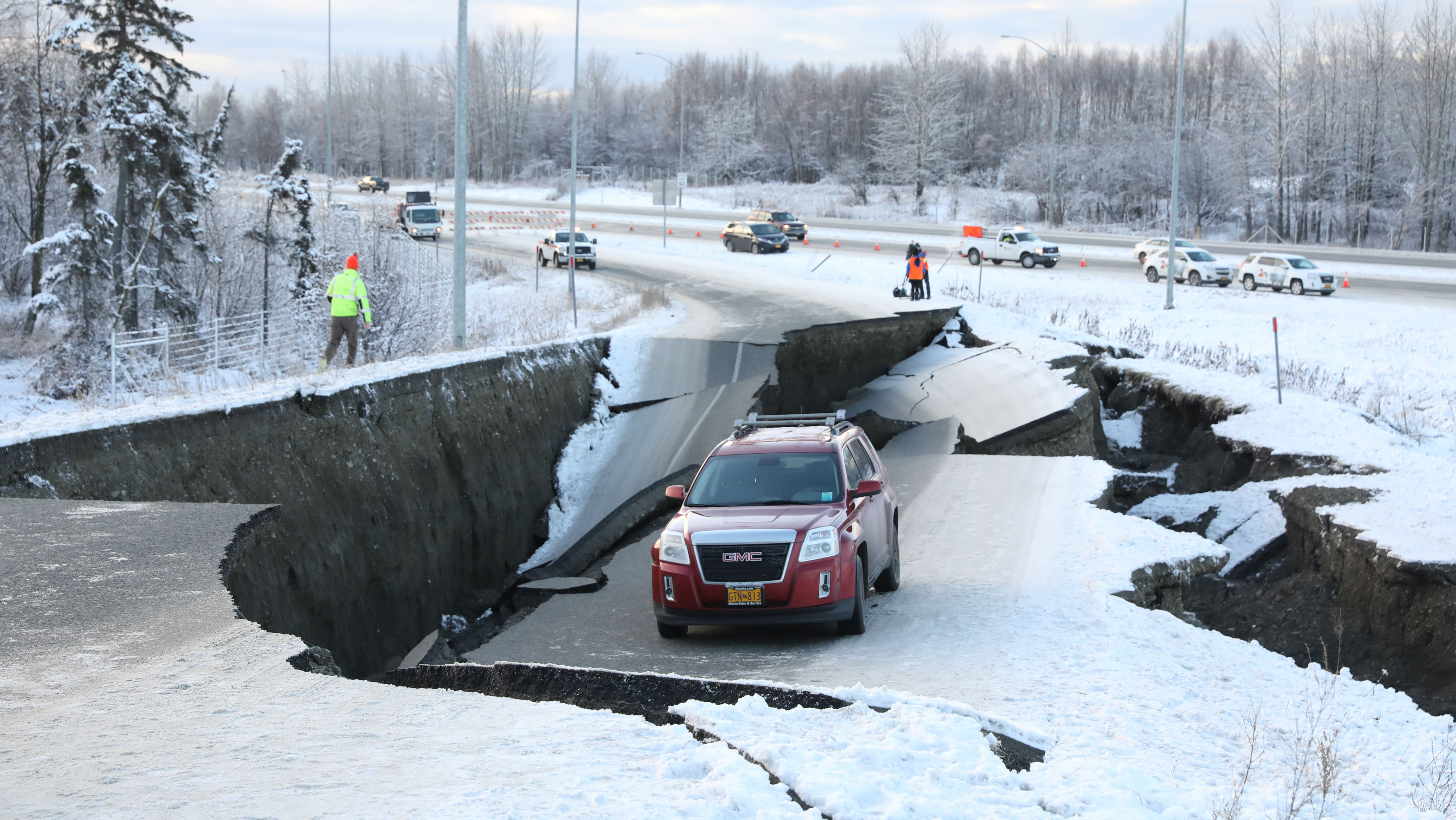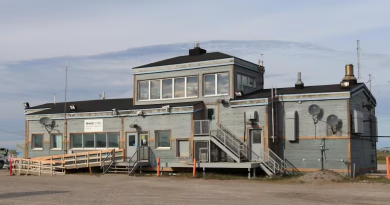Magnitude 4.9 aftershock in southcentral Alaska

A magnitude 4.9 aftershock struck near Anchorage, Alaska, at 5:21 a.m on Thursday — the largest since December 1st. The Alaska Earthquake Center placed the epicenter eight miles northwest of the state’s largest city.
The center says the aftershock was one of over 6,000 since the magnitude 7.0 quake on Nov. 30.
Natalia Ruppert is a seismologist with the Alaska Earthquake Center. She says a general rule of thumb is that the largest aftershock would be an order of magnitude smaller than the mainshock — the earthquake that caused it — meaning the largest aftershock from the Nov. 30 quake would be a magnitude 6.0.
“We haven’t seen it yet. We’ve seen a couple of magnitude 5… 5.2, 5.3, I believe. A bunch of magnitude 4,” Ruppert said. “So this is not unusual; the magnitude 4.9 aftershock is not unusual for a magnitude 7 mainshock.”
There have been about 40 aftershocks above magnitude 4.0 since the mainshock. Ruppert says the earthquake center doesn’t anticipate a quake as big as the magnitude 7.0 quake to happen as the area returns to the background level of seismicity. She also says as time goes on, the number and strength of the aftershocks will decrease.
Aftershocks still expected to happen
“The background level before November 30th in this specific region was maybe ten earthquakes per day,” Ruppert said. “Right now, we’re recording ten earthquakes per hour, at least ten. So it’s still way above the background level.”
She says it’s expected to take over a year for the area to return to normal, but aftershocks that people can feel should taper off in a few months.
This aftershock happened during the partial federal government shutdown that started last Friday. The US Geological Survey, which monitors earthquakes, is on furlough during the shutdown. Ruppert says that due to public safety protocol, the USGS is still monitoring earthquakes, but at a reduced capacity.
“So they are not able to do maybe any in-depth follow up. I don’t think they will do it,” Ruppert said. “But they are still recording earthquakes and reporting earthquakes. And their website is working.”
As of today, there have been just over 51,000 earthquakes in Alaska this year — a record high since the Earthquake Center began recording quakes. A little under 60 have been larger than magnitude 5.
Related links from around the North:
Canada: Canadian military trains to respond to Arctic earthquake, Radio Canada International
Greenland: Greenland earthquake and tsunami – hazards of melting ice?, Blog by Deutsche Welle’s Iceblogger
Sweden: Mining company LKAB won’t pay for earthquake damage to homes in Arctic Sweden, Radio Sweden
United States: With utilities fixed, focus shifts to childcare needs in wake of Alaska earthquake, Alaska Public Media



